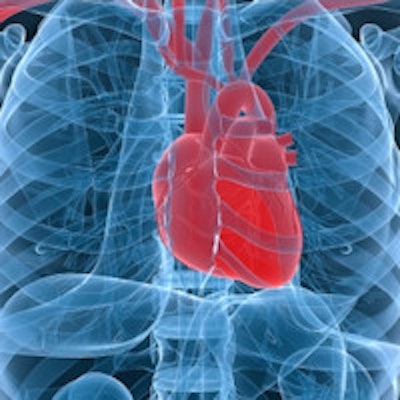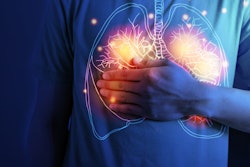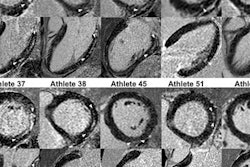
Certain MRI findings can independently predict future cardiovascular events in patients with coronary artery disease or those who recently had a heart attack, but you have to be careful which ones you choose, according to a study published online January 29 in the Journal of the American College of Cardiology.
In a meta-analysis of 56 previous studies, Dutch researchers found that some cardiac MRI findings are predictive for some types of patients, while there aren't enough data to support the prognostic power of other results.
"An important finding is that different cardiac MR features are associated with events depending on the patient population under consideration," wrote lead author Dr. Hamza El Aidi, from the department of cardiology at University Medical Center Utrecht, and colleagues (JACC, January 29, 2014).
Benefits of cardiac MRI
As the authors noted in their study, cardiac MRI has advantages over other imaging modalities because of its high spatial and temporal resolution, its ability to visualize ischemic heart disease in one scan, and its lack of ionizing radiation. Cardiac MRI is also considered the current reference standard for evaluating ventricular function and myocardial fibrosis using late gadolinium enhancement.
"However, data on prognosis from individual studies is limited, most often due to small sample sizes and/or a low number of events in these studies," they wrote. "Furthermore, the relative prognostic value of the available cardiac MR imaging findings is unclear."
The researchers decided to assess cardiac MRI's predictive power based on the following imaging features:
- Left ventricular ejection fraction (LVEF)
- Wall motion abnormalities
- Abnormal myocardial perfusion
- Microvascular obstruction
- Late gadolinium enhancement
- Presence of edema
- Presence of intramyocardial hemorrhage
Patients were divided into two groups: The first group consisted of those who had experienced a recent myocardial infarction, while the second included patients with suspected or known coronary artery disease (CAD).
The imaging findings were then correlated with "hard events" -- all-cause mortality, cardiac death, cardiac transplantation, and myocardial infarction -- or major adverse cardiovascular events (MACE), which included hard or other events as defined by authors of the evaluated papers. For each finding, a hazard ratio was calculated to show the association between that factor and future cardiac events in each of the two patient groups.
Paper chase
Cardiac MRI papers published before February 2013 were drawn from Medline and Embase. A total of 56 papers were found to meet the study's criteria, representing a total population of 25,497 patients.
There wasn't enough evidence to link cardiac MRI findings with hard events in the patients with recent myocardial infarction, according to the authors. However, findings that did demonstrate prognostic value included the following:
- In patients with a recent myocardial infarction, LVEF was an independent predictor of MACE in more than 50% of the studies, with a change in hazard ratio (HR) of 1.03 to 1.05 per 1% decrease in LVEF.
- In patients with suspected or known CAD, the following cardiac MRI findings were predictors of hard events:
- Wall motion abnormalities (HR range of 1.87-2.99)
- Perfusion defects (HR range of 3.02-7.77)
- LVEF (HR range of 0.72-0.82 per 10% increase in LVEF)
- Infarction (HR range of 2.82-9.43)
- In patients with suspected or known CAD, perfusion defects were associated with MACE (HR range of 1.76-3.21).
Important predictors
According to the authors, their study is one of the first comprehensive systematic reviews investigating the predictive abilities of different cardiac MRI findings for future cardiovascular events.
"Among patients with suspected or known coronary artery disease, inducible wall motion abnormalities and inducible perfusion defects were the most important independent predictors of hard events," they wrote. "Other independent predictors were LVEF and infarct size."
To better assess cardiac MRI, the authors advocated the development of reporting guidelines for prognostic studies in cardiovascular imaging.
They cited the Reporting Recommendations for Tumor Marker Prognostic Studies (REMARK), which are used for oncology, and the Prognosis Research Strategy (PROGRESS) recommendations as examples.
"In conclusion, cardiac MRI is capable of providing independent prognostic information that allows for risk stratification after myocardial infarction as well as in patients with suspected or known coronary artery disease," they wrote.



.fFmgij6Hin.png?auto=compress%2Cformat&fit=crop&h=100&q=70&w=100)




.fFmgij6Hin.png?auto=compress%2Cformat&fit=crop&h=167&q=70&w=250)











